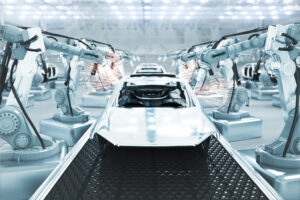Emission Control: Australia pegs new areas for CCS exploration, but is the decarbonisation tech worth investing in at all?

Pic: Getty Images
Emission Control is Stockhead’s fortnightly take on all the big news surrounding developments in renewable energy.
Australia, one of the world’s largest liquified natural gas (LNG) exporters, is counting on carbon capture and storage (CCUS) technology to decarbonise its industries after releasing new sites in Commonwealth waters last week to explore for offshore gas storage.
The Labour government reckons the technology will help Australia lower emissions and meet net zero commitments, despite the epic failure of the world’s largest commercial CCS project, Chevron’s Gorgon, struggling to hit capacity.
While Gorgon’s large-scale CCS system was meant to be part of the giant LNG development and was supposed to bury an average of 80% of the project’s emissions from 2016, it only started to actually store emissions in 2019 and is still only operating at a third of capacity according to Chevron itself in May this year.
Nonetheless, the 2023 Offshore Greenhouse Gas Storage Acreage release includes 10 areas across seven basins off Western Australia, Victoria and Tasmania which already host a variety of offshore exploration and production activities.
The move follows the government having provided $12 million in the May 2023-24 Budget to review the environmental management regime and examine ways to improve regulations to support offshore CCS projects.
Minister for Resources and Northern Australia Madeleine King said the areas had been chosen for their geology and storage potential, and following public feedback, been shaped to minimise impacts to other marine users and the marine environment.
Not the be all and end all solution
It is worth highlighting at this stage that while there is certainly a place for CCS in the overarching drive to achieve net zero emissions, it is but one cog in the wheel.
There is little doubt that the actual storage part of the process is mature. Injecting carbon dioxide into oil reservoirs to boost production was first tested in the early 1970s and it has matured considerably since then.
Transporting CO2 isn’t particularly difficult either.
It can easily be transported using repurposed natural gas or new-build pipelines or even transported by ship like LNG. If anything, it is actually easier as CO2 liquefies at just -31 degrees C (compared to gas at -161.5C).
Where the difficulty might emerge in the process is capturing the CO2 itself.
Firstly you have to figure out just where you are capturing the CO2 from Is the CO2 being separated from, say, a natural gas stream or as a byproduct of industrial processes?
Secondly, the process needs energy.
Some sources have indicated that a power station which captures its emissions could use anything between 10% and 40% of its capacity just to power the process.
Until more efficient methods of carbon captured are made commercially viable, the process is going to be costly to use on a going basis.
There is also the issue of whether the selected reservoir is suitable for storing CO2, which is exactly the issue that Chevron is facing at Gorgon – namely technical problems involving underground pressure at its storage site.
The bottom line is that while CCUS tech is indeed viable, it is very much on a case by case basis, not be the end all and be all of our emissions reduction efforts.
ASX stocks with renewable energy and hydrogen news
Pure Hydrogen (ASX:PH2)
As one of the first companies covering hydrogen fuel cell (HFC) vehicles, Pure Hydrogen has secured a funding deal to build its fleet to rent out to customers.
The clean energy company inked a deal with Australian financier Monard Capital and its US affiliate last week, for the provision of a $125 million funding facility.
The facility will fund the purchase of HFC trucks, vehicles and equipment which can then be rented to approved PH2 customers, inclusive of service and hydrogen supply.
PH2 will establish a special purpose entity to house the rented assets, which will be made available on minimum three-year terms to a maximum of 10 years at competitive rates determined on a case-by-case basis subject to a credit assessment of the customer.
The deal, subject to a formal accreditation process commencing immediately, will see funding available for allocation early 2024.
MPower Group (ASX:MPR)
Renewable energy and battery storage developer, MPower Group, has successfully completed the purchase of all project rights for the development of its next renewable energy project in Narromine, NSW which puts it on the path to begin construction activities.
The project rights include the Connection Agreement for connection to the grid, land rights and key planning approvals – all of which provide MPower with a clear pathway to accelerate construction following the original purchase agreement to acquire the designated site in August 2021.
It follows the successful acquisitions of the Lakeland Solar & Storage Project in Cooktown Shire, North Queensland and the Faraday Renewable Energy Project in Faraday, Victoria, and builds on the company’s existing shovel-ready assets in South Australia.
The project includes over 12,000 Bifacial PV Modules with the capacity to produce more than 14,000MWh of energy in its first year of operations and is due for completion within 12 months.
Hydrogen and renewable companies share prices today:
At Stockhead we tell it like it is. While Pure Hydrogen are a Stockhead client, it did not sponsor this article.
Related Topics
UNLOCK INSIGHTS
Discover the untold stories of emerging ASX stocks.
Daily news and expert analysis, it's free to subscribe.
By proceeding, you confirm you understand that we handle personal information in accordance with our Privacy Policy.








